Blackberry (Rubus spp.) is an emerging fruit crop in Florida. Correct pruning practices are essential to promote good fruit quality and yield. This article aims to provide a general overview of growth habits, fruiting patterns, and pruning requirements/timing for county and state Extension faculty, growers, homeowners, and students interested in growing floricane blackberries in Florida.
Correct pruning of blackberries requires an understanding of how they grow and set fruit. They are perennial plants, but individual canes (stems) are biennial. This means vegetative growth happens each year, but fruit is only produced on the previous year’s vegetative growth. Thus, it is usually the two-year-old canes that produce fruit for most floricane varieties. Once a cane has set fruit, it will no longer fruit the following season.
First-year shoots are called primocanes, and they emerge during April in Florida. Dense, green foliage covers these vigorous shoots, which develop flower buds late in the spring season. They can grow to several feet in height if left unpruned (Figures 1, 2, and 3).
Floricanes are the second-year shoots. Their woodier, darker canes flower in the spring and set fruit during mid-summer, dying back after harvest.
Primocanes (younger canes) have light-brown bark and do not break easily if bent, while floricanes (older canes) have dark-brown bark and tend to break more easily. A mature plant should have primocanes and floricanes growing simultaneously (Figures 1 and 2); however, each type has different pruning requirements and timing.
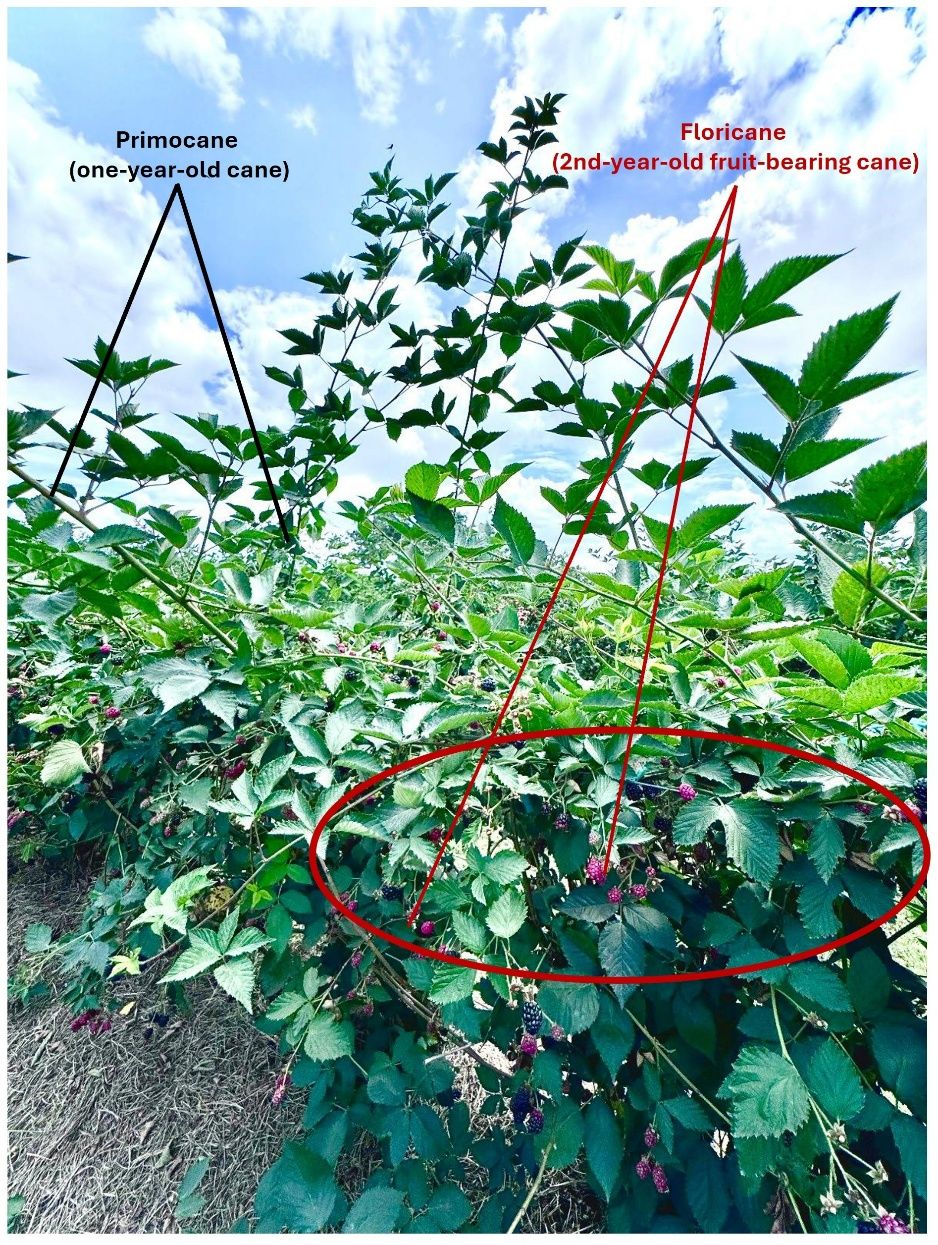
Credit: Muhammad Shahid, UF/IFAS

Credit: Muhammad Shahid, UF/IFAS
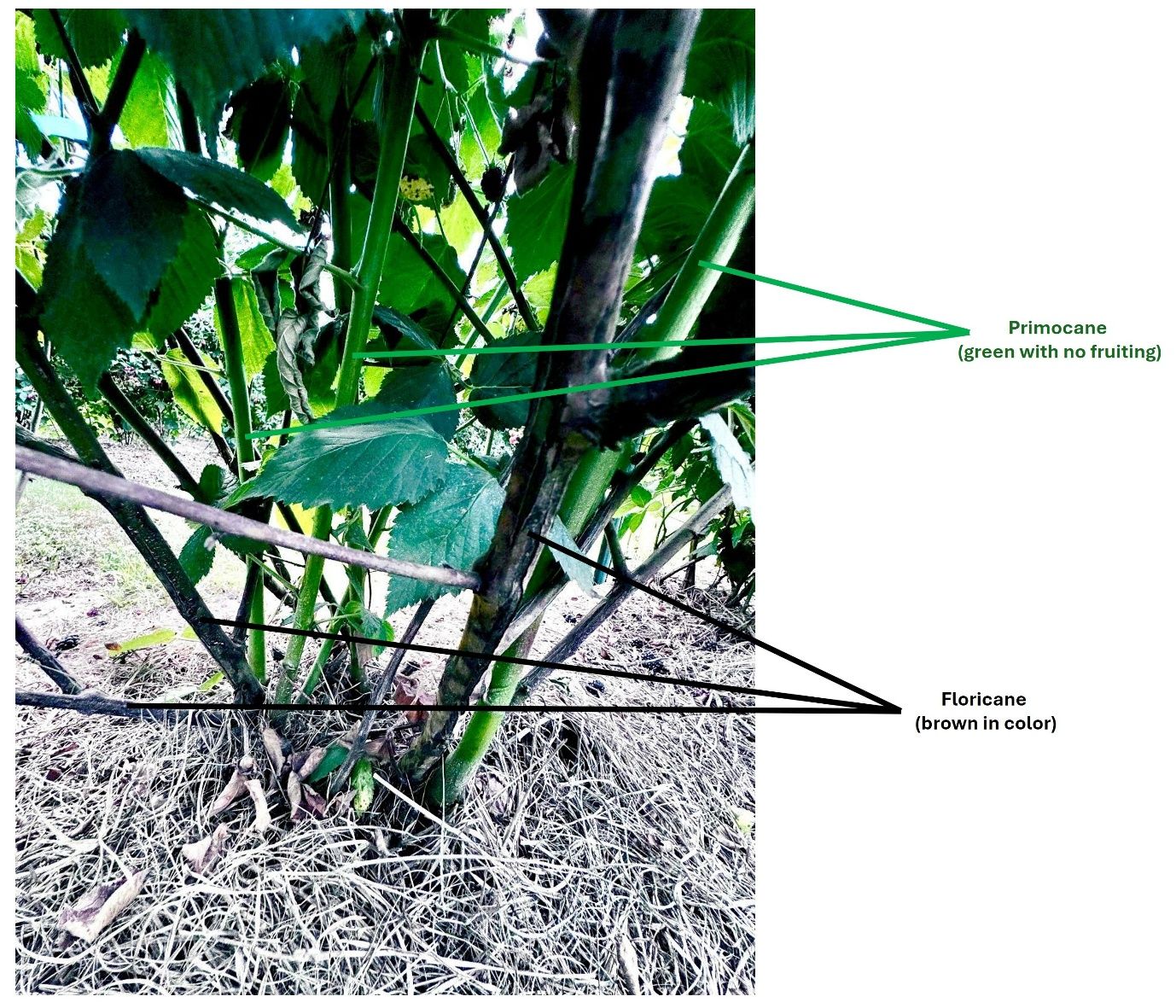
Credit: Muhammad Shahid, UF/IFAS
Why should blackberries be pruned?
- Pruning is essential for achieving optimal fruit size, yield, and quality, as well as limiting disease and pest injury.
- Pruning is also required to remove dead, diseased, and dry canes (branches) within the plant canopy, which will allow the plant to produce sufficient flowers and fruit the following season.
When to prune?
Three pruning events (i.e., early summer, late summer, and winter) are recommended for floricane blackberry production in Florida. A pruning tool kit should have a sharp pruner, loppers, leather gloves, and tie tape (Figure 4). Always use disinfected tools to minimize the spread of disease. Repeat disinfection of pruners and loppers after pruning each plant. Different disinfectants can be used for sterilization, such as a 10% bleach solution or quaternary ammonium. Sterilization of pruning tools is critical to prevent the spread of disease. Use disinfectant to sterilize cutting tools between each plant to avoid spreading disease.

Credit: Muhammad Shahid, UF/IFAS
Early and Late Summer Pruning/Tipping
During early summer pruning or tipping, blackberry plants will have both primocanes and floricanes. Primocanes are easily distinguished from floricanes by their light-green leaves. Also, floricanes will bear fruit while primocanes will not.
In Florida, primocanes emerge in April, overwinter, and produce fruit the following year. They are characterized by an apical dominance mechanism, which gives canes the ability to grow at their tips. Tipping refers to removing the tip of the primocanes during early summer pruning. This practice will help the plant reallocate its energy resources to produce more lateral branches. Because fruit is produced on lateral branches, early summer pruning or tipping of primocanes is important to improve fruit yield. Due to lower temperatures and humidity, early summer primocane pruning promotes growth and development of lateral branches with the lowest chance of disease pressure afterward. It also helps in maintaining the desired plant height (i.e., not exceeding 5 feet).
Primocanes can be easily tipped by hand in early summer when they are tender, but a pruner should be used later in the summer when the canes are thicker. Apply fungicide immediately after pruning thicker primocanes in late summer, because large wounds/cuts can encourage fungal pathogen growth. Always cut and remove the tip right above the leaf (Figure 5). All primocanes that are 4–5 feet in height should be tipped so laterals can be easily trained on the top wire of the trellis system (Figure 6). Primocane pruning can also be done after harvesting in early July along with floricane pruning.
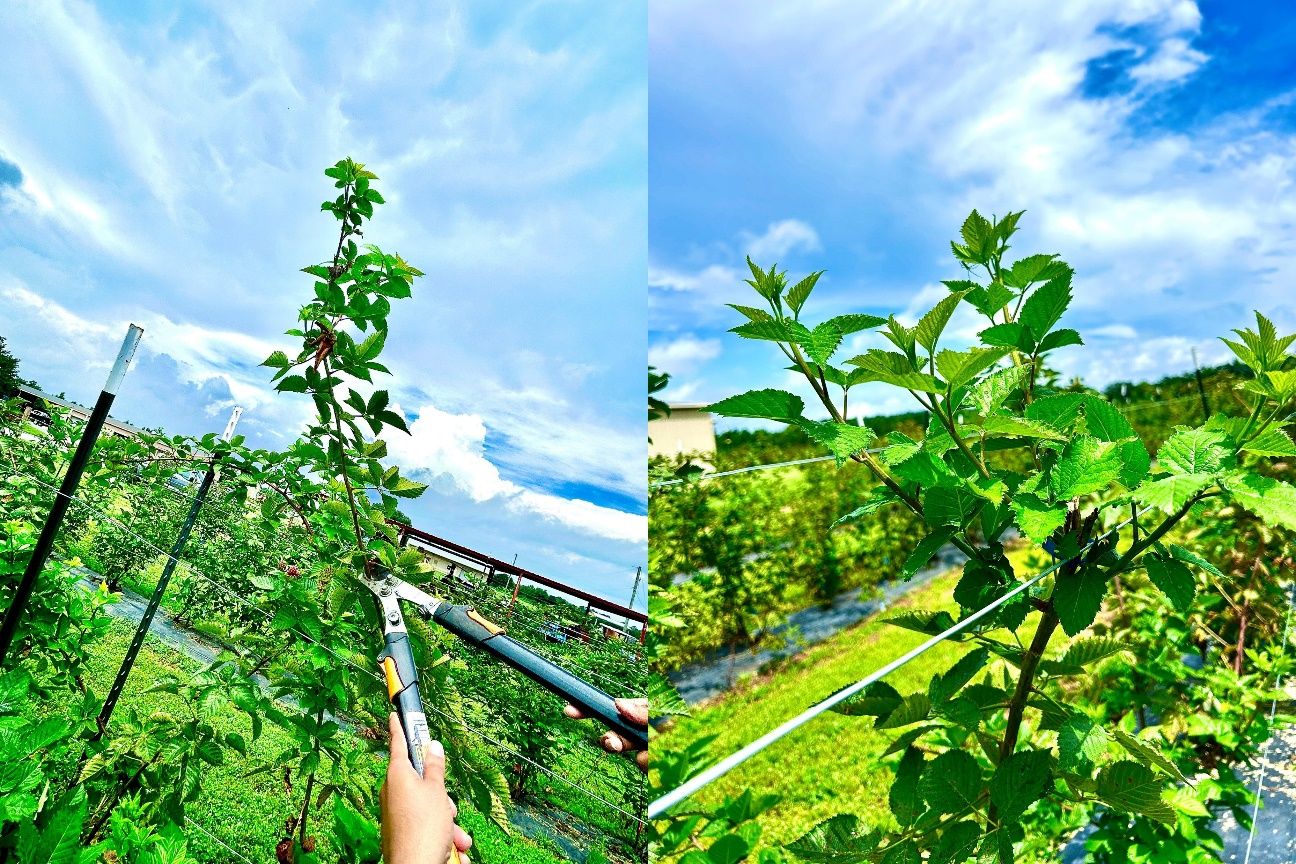
Credit: Muhammad Shahid, UF/IFAS
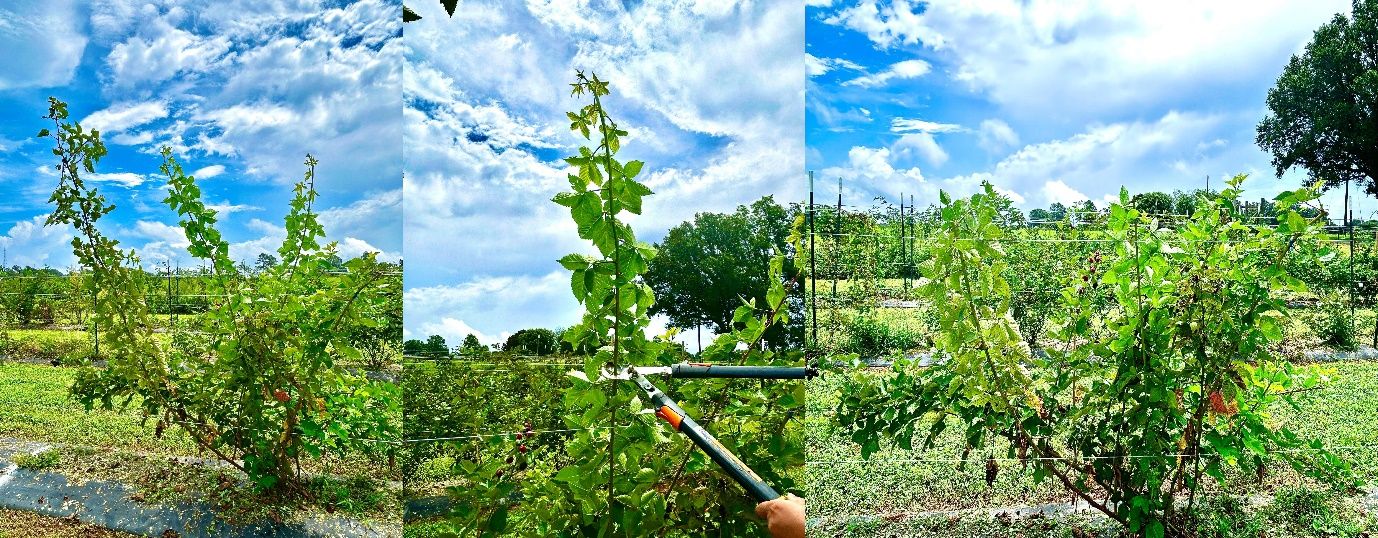
Credit: Muhammad Shahid, UF/IFAS
In other blackberry-producing states, such as Oregon, Arkansas, and North Carolina, berries are harvested during July through August (harvest season may go through September in Oregon). Floricane pruning in these areas typically occurs in winter after defoliation, because there is a short period between the end of harvest and defoliation or dormancy. In contrast, the Florida harvest begins in mid-May and continues through mid-July, so there is a longer period post-harvest prior to dormancy. If floricane pruning in Florida is delayed until winter, the floricanes will compete with primocanes for nutrients, water, light, and air. This competition will reduce primocane growth and development. For this reason, floricane pruning in Florida is recommended for late summer following harvest, to promote better growth and development of primocanes (and associated fruiting) in the following year.
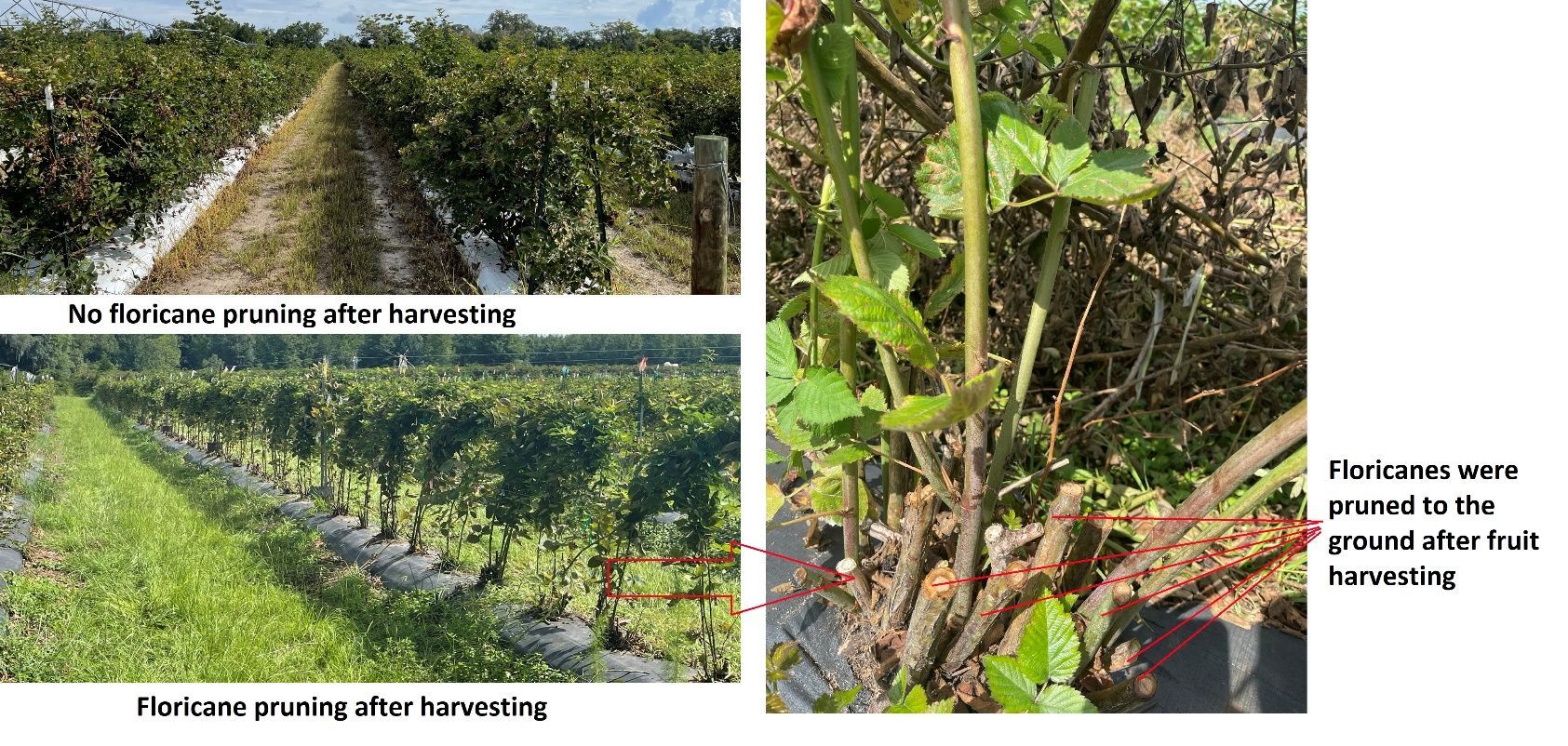
Credit: Muhammad Shahid, UF/IFAS
Winter Pruning
Dead, small, or weak branches without laterals, as well as branches growing in the wrong direction or crossing, should be removed during winter pruning to leave 4–5 healthy and uniform primocanes (Figure 8). If too many primocanes are left to fruit, the canopy may be too dense, and decreased air and light penetration into the canopy may affect fruit quality. In addition, a higher number of branches may increase disease pressure and the microclimate in the canopy, facilitating insect feeding and injury. Lateral branches produced after tipping should also be pruned to 14–16 inches in length. Afterward, the branches should be attached to the wires on the trellis system with tie tape. This is also a good time to inspect the trellis system and repair any damage.
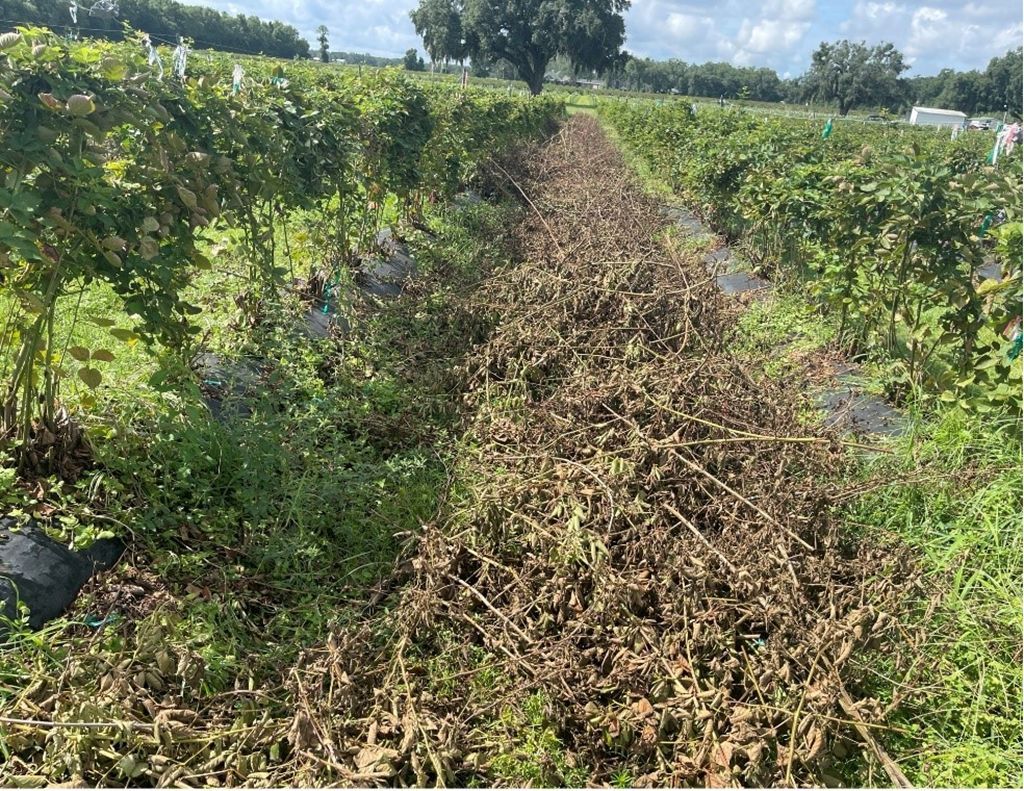
Credit: Muhammad Shahid, UF/IFAS